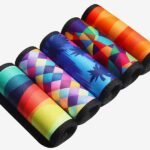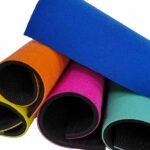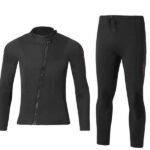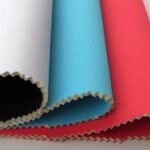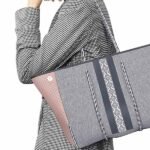Lunch bags are essential for keeping food fresh and maintaining its temperature during transit. Among the popular choices are neoprene lunch bags and insulated lunch bags, each offering unique benefits. But how do they compare? Let’s dive into their features, differences, and which one might be the right choice for you.
Neoprene lunch bags are flexible, durable, and lightweight, while insulated lunch bags often feature layers designed specifically to maintain temperature for longer periods. Your choice will depend on your priorities, such as portability, insulation, and customization options.
With that in mind, let’s break down the details of neoprene and insulated lunch bags and find out which one suits your lifestyle better.
What is a neoprene lunch bag?
Neoprene lunch bags are made from a synthetic rubber material known for its flexibility, water resistance, and lightweight properties. Originally designed for wetsuits, neoprene has become a popular choice for lunch bags due to its practical qualities.
Neoprene lunch bags are lightweight, durable, and resistant to water, making them ideal for carrying food and beverages. Their stretchiness also allows them to accommodate containers of various shapes and sizes.
Features of Neoprene Lunch Bags
| Feature | Benefit |
|---|---|
| Water resistance | Protects contents from spills |
| Flexibility | Fits odd-shaped containers |
| Lightweight | Easy to carry |
| Machine washable | Simple to clean |
Neoprene lunch bags are perfect for people who value portability and ease of maintenance.
Is neoprene a good insulator for lunch bags?
Yes, neoprene is an effective insulator for lunch bags. Its closed-cell foam structure traps air, which helps maintain the temperature of the contents for several hours.
Neoprene lunch bags can keep food warm or cold for a reasonable amount of time, but their insulation performance may not match that of multi-layer insulated lunch bags.
Comparing Insulation Performance
| Material | Insulation Duration | Best Use Case |
|---|---|---|
| Neoprene | Moderate (3-4 hours) | Short commutes, casual use |
| Insulated layers | High (6-8+ hours) | Long trips, work lunches |
For shorter durations, neoprene works well. However, for extended hours, a dedicated insulated lunch bag may perform better.
What is the best material for an insulated lunch bag?
Insulated lunch bags often use materials like aluminum foil, foam layers, and polyester fabric. These materials work together to create a thermal barrier that helps maintain food temperature longer.
The best insulated lunch bags combine lightweight construction with advanced thermal technology to provide superior performance.
Features of High-Quality Insulated Lunch Bags
- Outer Layer: Durable polyester or nylon for protection.
- Middle Layer: High-density foam for insulation.
- Inner Layer: Aluminum foil or similar reflective material to retain heat or cold.
This combination ensures optimal insulation, making insulated lunch bags a reliable choice for extended use.
Are insulated lunch bags worth it?
Insulated lunch bags are worth it if you prioritize temperature retention. They are particularly useful for individuals who carry meals for long hours or in extreme weather conditions.
Insulated lunch bags offer better thermal performance due to their multi-layer construction. They can maintain the temperature of food and drinks for extended periods, ensuring freshness.
Advantages of Insulated Lunch Bags
| Advantage | Benefit |
|---|---|
| Temperature control | Keeps food warm or cold longer |
| Versatility | Suitable for hot and cold items |
| Durability | Resistant to wear and tear |
If you need reliable temperature control for meals, an insulated lunch bag is a smart investment.
Which lunch bag is better at keeping food warm or cold?
Insulated lunch bags are better for keeping food warm or cold due to their specialized layers. Neoprene lunch bags provide moderate insulation but cannot retain temperature as effectively over long hours.
Insulated lunch bags can maintain temperature for up to 8 hours or more, depending on their quality. Neoprene lunch bags, while portable and stylish, are better suited for shorter durations.
Comparing Neoprene and Insulated Lunch Bags
| Feature | Neoprene Lunch Bag | Insulated Lunch Bag |
|---|---|---|
| Insulation Duration | 3-4 hours | 6-8+ hours |
| Portability | Lightweight and compact | Bulkier due to layers |
| Cleaning and Maintenance | Machine washable | Wipe clean inner layer |
| Best Use Case | Short trips, snacks | Long commutes, full meals |
The choice depends on your daily routine and specific needs for temperature retention.
Conclusion
Both neoprene and insulated lunch bags have their unique advantages. Neoprene lunch bags stand out for their portability, flexibility, and water resistance, while insulated lunch bags excel in long-lasting temperature retention and durability.
At Szoneier, we specialize in manufacturing high-quality neoprene lunch bags that combine functionality with style. Our products are customizable to meet your brand’s needs, making them perfect for retailers, wholesalers, and brand owners.
Looking to add neoprene lunch bags to your product line? Contact us at info@neoprene-bag.com or visit www.neoprene-bag.com for more information and a free sample.




